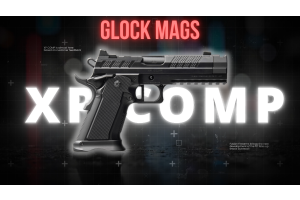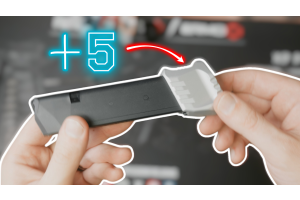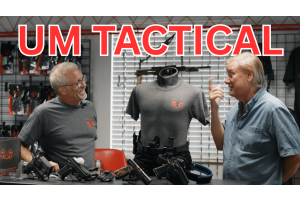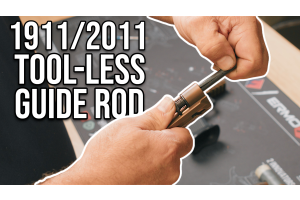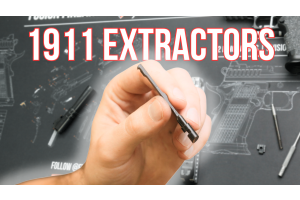What Are Cryogenic Barrels? | Are They Worth It? | 1911 Barrels
0%
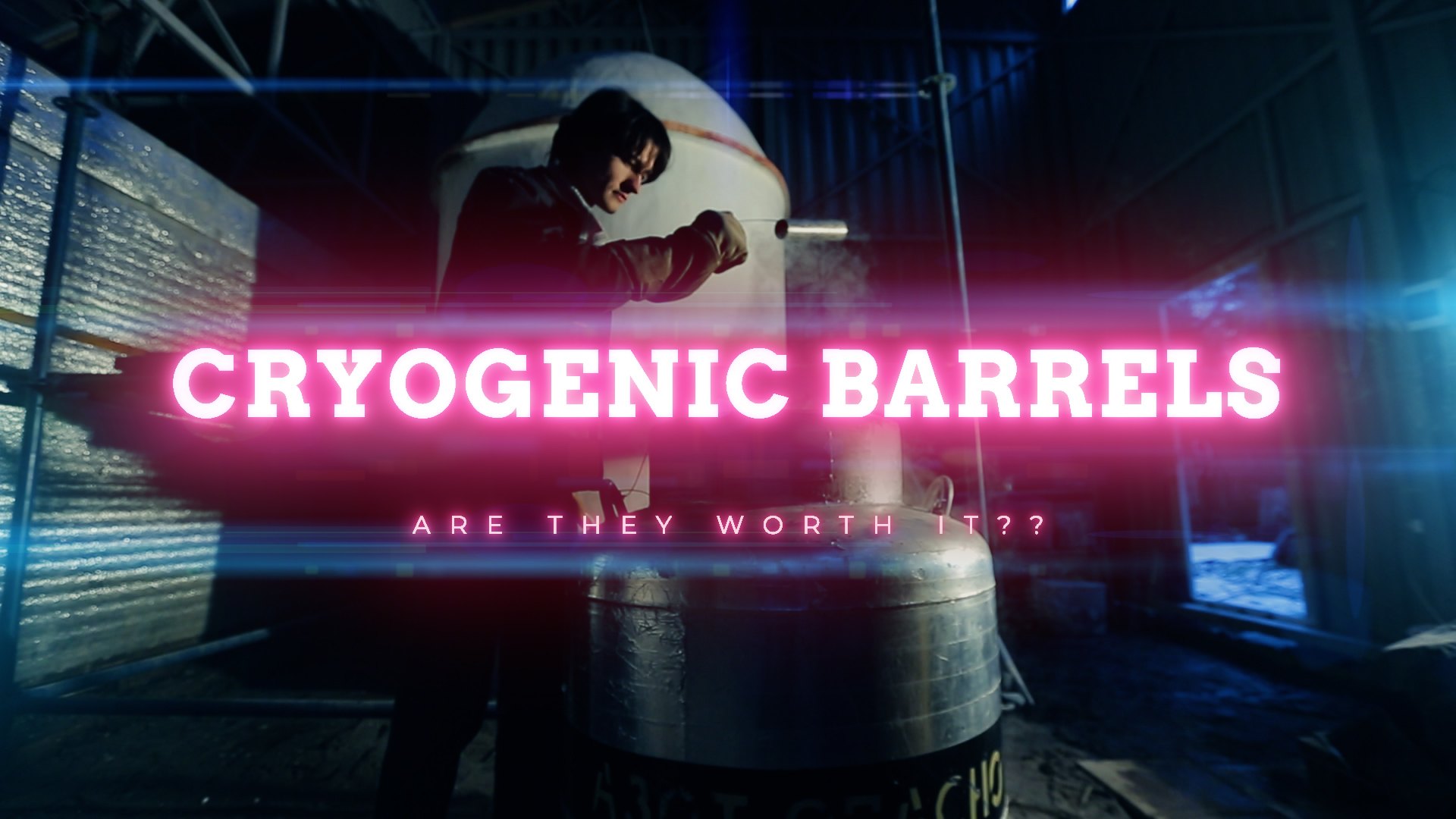
In this video, we will give you our thoughts on cryogenic 1911 pistol barrels including their benefits and drawbacks. Do you need a cryogenic 1911 pistol barrel? Chances are probably not!
Cryogenic Treatment for 1911 Barrels: Is it Worth the Cost?
Cryogenic treatment, also known as the aging process of materials, is a process that involves deep freezing a 1911 barrel to extremely low temperatures. The barrel is typically cooled to over 300 degrees below zero Fahrenheit and then slowly warmed back up. This process is often repeated multiple times.
The goal of cryogenic treatment is to improve the stability and durability of the material by altering its microstructure. When metal is cooled to extremely low temperatures, the atomic structure changes, making the material stronger and more resistant to wear and tear. Cryogenic treatment is often used for highly precise and critical components, such as gauges and other measurement tools, where even small movements or changes in size can have significant consequences.
However, the benefits of cryogenic treatment for a 1911 barrel may not outweigh the cost. The tolerances for barrel manufacturing are not as precise as those for other materials that commonly undergo cryogenic treatment, such as gauges and clean room components. Additionally, Bob Serva of Fusion Firearms has stated that cryogenic treatment may not provide any significant benefits for a pistol barrel like the 1911.
If you're still considering cryogenic treatment for your 1911 barrel, it's important to do your research and carefully weigh the potential benefits against the cost. While the process may have some benefits in certain industries, it may not provide significant improvements for a 1911 barrel.
It's worth noting that the cost of cryogenic treatment can be substantial. The process requires specialized equipment and a controlled environment, and the cost of these factors can add up quickly. If you're considering cryogenic treatment for your 1911 barrel, it's important to carefully consider the potential benefits and the cost before making a decision.
In addition to the cost, it's important to consider the potential risks of cryogenic treatment. The extreme cold of the process can cause stress on the barrel, which could potentially lead to cracks or other damage. It's important to carefully evaluate the condition of your barrel and consult with a professional before deciding whether cryogenic treatment is the right choice.
Overall, cryogenic treatment may provide some benefits for certain types of materials, but it may not be necessary or worth the cost for a 1911 barrel. If you're considering cryogenic treatment, it's important to carefully consider the potential benefits, cost, and risks before making a decision.
OUR ANSWER
For most 1911 pistols, the benefits of a cryogenically treated barrel are minimal and do not justify the added cost. While there may be some potential benefits for competition shooters who are shooting at extremely long range, these benefits are likely to be minimal at best. Based on this, we do not recommend the added cost of cryogenic treatment for 1911 barrels.
Key Takeaways
- Cryogenic treatment, also known as the aging process of materials, is a process that involves deep freezing a 1911 barrel to extremely low temperatures.
- The goal of cryogenic treatment is to improve the stability and durability of the material by altering its microstructure.
- Cryogenic treatment is often used for highly precise and critical components, such as gauges and other measurement tools, where even small movements or changes in size can have significant consequences.
- The benefits of cryogenic treatment for a 1911 barrel may not outweigh the cost.
- If you're considering cryogenic treatment for your 1911 barrel, it's important to carefully consider the potential benefits, cost, and risks before making a decision.
CHECK OUT OUR MINDS CHANNEL: https://www.minds.com/fusion_firearms/
CHECK US OUT ON FACEBOOK!
Facebook Tech: https://www.facebook.com/Bobs1911bench
Facebook Info: https://www.facebook.com/FusionFirearms
CHECK OUT OUR INSTAGRAM: https://www.instagram.com/fusionfirea...
Music: https://artlist.io/
Full Transcript
hello folks today we're going to look at cryogenic barrels a lot of questions on those [Music] hi folks bob serva from fusion firearms today what we're gonna do we've been getting an awful lot of questions we do manufacture a lot of barrels 1911 barrels and such we're getting a lot of questions on the cryogenic process okay oh should i have my barrel cryogenically done well what is it what is cryogenics and what's it really worth okay cryogenics is a fancy name all right if you were if you've been a an engineer in metallurgy or if you have been a tool maker you'll you'll probably definitely come across cryogenics which in the in the old days when i was coming up through the apprenticeship i am a journeyman tool maker cryogenics we didn't call it that that was kind of a new fancy name probably in the last maybe 10 years or so people have been calling that but what it was always called is aging aging process of materials and what we'll go over today is is what that really is and and what cause and effect it has for the cost involved the costs are quite substantial to have a barrel done cryogenetically and and what is the process what is the process and and what's it going to actually do for you what's the outcome obviously this process has some merit okay and i'm not saying for barrel applications but i'm saying in in the mechanical world because it's been being used for years and to simply put it the aging process of material or cryogenics as they call it today is deep freezing okay and what that means is they're putting in generally a nitrogen a nitrogen bath down they usually have containers that go to tanks that go down into the in into the floor of a production facility a lot of times this will be run right along with the people that do heat treatments and what they'll do is deep freeze to over 300 degrees negative fahrenheit like 190 so centigrade and they'll do it multiple times bring it back up to room temperature deep freeze it again maybe do it two or three times generally but it's a three time step process but again what does that really do the material what why would you want that for your 1911 barrel and to to cut right to the point i wouldn't want it for my 1911 barrel okay because it doesn't have any real purpose for for a pistol barrel we'll go through what what cryogenics claims to do when you look at very highly stable metal materials which means i'm talking cold room clean room environment materials that you are going to have to have a cold room or a clean room a temperature control room to check when you get to those tolerances which again those tolerances are much smaller than compared to most type of barrel manufacturing now we we do work in the in the tents okay which isn't point .01 which if you're into the carpentry and that that's what you'd think of as a 10. no a tenth in machining is point zero zero zero one okay which is a tenth of a thousandths basically and then you'll go to the millionth scale which if you're building gauges anybody's a tool maker or a gauge maker there's guys that that people that do that i mean they'll be building gauges to 20 million 50 millions and you say well how do you even check that again you need to have electro limit gauges you have to have special type of equipment to check those things and you have to have it as stabilized area where you're going to have stable temperature at all times usually it's 68 degrees is the standard and so say you were making a gauge a simple step gauge that you're using for indicating and then you're going to check your part one thing that through the years engineers and tool makers machinists alike they they've all found out that stabilized material doesn't move and people say well bob this barrel is not moving well if i if i leave it here and i freeze it at 32 degrees the the the size of this barrel in the in the tenth wise or even maybe even thousands wise will change if i bring it up to say 120 degrees so you are going to get some different changes due to temperature in just the material itself so say you had a gauge that you need the tolerance to be two-tenths okay again .0002 okay real small real small you you can't even see it okay so again just to give you a visual say like most people's hair most people's hair if you just go do a thousands okay which there's ten tenths and a thousands all right most people's hair will be about eight thousands thick when you when you if you mic'd your hair so so you're taking a hair and say trying to split that eight or ten times to to get down to where a tenth would be so that's just to give you kind of a visual of really what you're working with you're working with things that you can hardly see generally you won't see that in in most most items people are using and you say why well because most people say you're using the camera well that camera could be out at negative 20 degrees out taking shots of a polar bear or it could be down in the bahamas at 110 degrees taking pictures of somebody on the beach so you can't make something that that has to function within that such critical tolerance if you do it's not going to work within the parameters of that that product is going to see through its lifetime possibly so again these type of processes are for real specific type uses and again what what one thing that aging was is they found one of the most stable materials for making say gauges on was cast iron a cast iron would be very stable it would it wouldn't move with with temperature changes as fast or as quickly or as much as as other materials and the other thing people noticed is that again aging why they call aging process because they used to actually years ago before the the nitrogen baths were were around and and actual cryogenics if you want to call it the modern day name of it it they used to actually leave steel out in in the weather okay they would take steel and actually leave it in the field and as it froze and as it came back up to temperature through the seasons and rusted and everything else that material would become more stable so when you manufactured something from it it wouldn't move as much with temperature changes and things that may as drastically as something that wasn't stabilized so where what application does it really have well our bores yes they are air gauge with intense but again this gun gun's not going to operate under those those circstances that the the cryogenics is going to actually give it much of a benefit so again as a pistol shooter most pistol shooters are looking at either shooting targets at 25 foot 50 yards something of that nature you're looking at if maybe if i was looking at application for bench rest and i was in the top 10 percentile of bench rest shooters in the country i'd say yeah maybe i try it because it might give me a little bit of an edge so again those are things that they're reference points but again i don't really see the application for 99 of all pistol shooters where cryogenics is really going to help you out so again where what are the benefits that are claimed with cryogenics well when i look at simple things that you can read about it they they look at in improved wear resistance which okay maybe a little maybe a little but if your barrel cost you under 200 to buy a brand new match barrel and the cryogenic process costs 300 then by the time this barrel gets to a point where it's worn out it's cheaper to buy another barrel it's more cost effective to go that way then you might save an extra whatever 3 000 shots or something maybe 2 000 i don't really know what that factor is but what you're going to save on this end and what you paid for you're not getting it out of the the mechanics that it's that it's giving you so that's one thing that's claimed and the other one of the other things is cracking well yes if you have a product that's having a lot of issues with thermal cracking due to due to shock or or thermal conditions and there are applications for that what what what would one be well say like the valves the valves in your car okay why because that carb engine block may be going from negative 20 when it starts up in the morning up to 185 200 degrees 300 degrees running that thing that that engine and that valve is being smashed back and forth on springs thousands and thousands of times as as you're driving it so that is going through constant fatigue and constant wear where your your barrel really isn't doing that even if you're a target shooter and you're shooting all day long you're never going to see that type of constant fatigue that you will on some other mechanisms like a car engine like a valve so again that even though it may give some particular benefits to that that mechanical mechanism for you as a pistol shooter really not going to do a whole lot for you so i don't see that being being really a factor also in cryogenics the other is let's see here the others improving the surface coefficient frictional coefficient i don't see that either really and because if the the actual surface finish generally is either done prior to the cryogenic process or done right after what i mean done after you'll stabilize you'll basically say make a fixture or a gauge or even if it was say some high tolerance pin you you'll you'll have that ground to a hot very high tolerance you'll probably leave a slight bit of material on it for cleaning up you're going to go through the cryogenic process and then you're going to bring it back and do a skim grind to finish that product to the to the proper size that you need or or even hand lap it sometimes they there's requirements for hand lapping of gauges bringing them below two tenths of a thousands so again all that plays in the factory with certain types of mechanical components but i again do not see it at all for any type of form of pistol barrel where you're gonna gain the benefit for the cost and expense that's going into it so again i'm not a real big fan of cryogenics we're getting a lot of calls on cryogenics like oh can can you send this barrel out before you send it to me and have it done cryogenically i'm it's just not worth you're worth your money i'm just telling you right now you're not going to see any difference at your 50 yards or anything like that with a handgun again possibly at bench rest level because there's guys that are shooting a mile or more now i mean it's it's incredible some of the accuracies folks are getting they people work their loads and work their their their custom guns to to shoot so good at those those long long distances so at that yeah maybe it probably still gives you a better mental edge than a a mechanical edge but it's something to consider i would say at that point but again for most handgun applications no you're really not going to gain much much traction or much benefit out of it so again for myself i would say no on the cryogenics and and move on from there and really those are all the the real benefits on when you look at stabilizing a product or going through the expense to age cryogenically stabilize a product so when you look at the handgun applications it's very very slim very slim and most people will never ever even know the difference in their shooting or accuracy or longevity of the product by going through and making that extra expense for that process so we just wanted to clarify that and and go over that with you guys today because we haven't get so many questions on it and again we thank you for watching and we'll see you again at fusionfirearms.com [Music]







